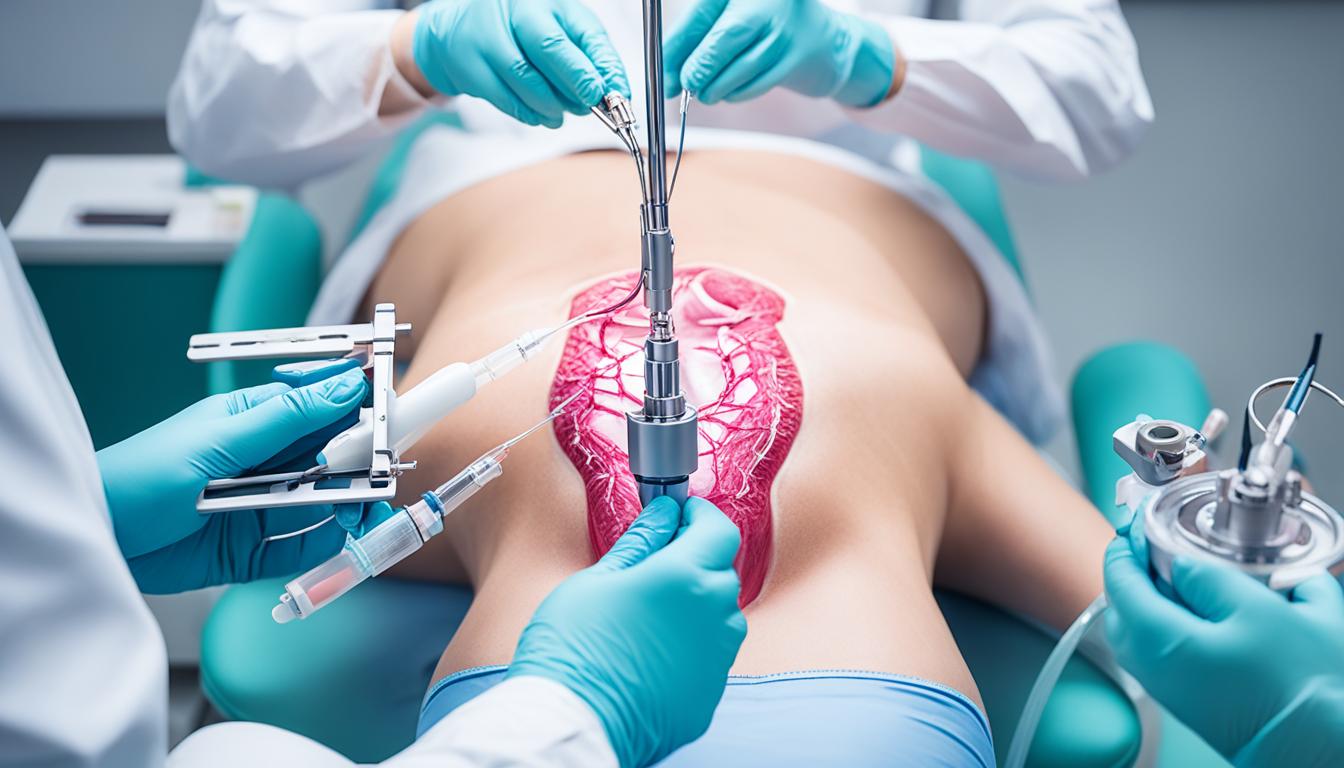Rectovaginal fistula is a condition where the rectum and vagina have an unusual connection. It leads to problems like not being able to control bowel movements, passing gas or stool through the vagina, and more UTIs. Causes include problems during childbirth, Crohn’s disease, and issues from past surgeries. Finding out if someone has it needs a detailed look at their medical past, a physical check, and tests like an endoanal ultrasound.
Treating a rectovaginal fistula can be done with surgery, meds, or stem cell therapy. Stem cell treatment looks very hopeful in helping patients. It boosts tissue regrowth and makes healing better.
Key Takeaways:
- Rectovaginal fistula is a condition characterized by an abnormal connection between the rectum and vagina.
- Common symptoms of rectovaginal fistula include fecal incontinence, passage of gas or stool through the vagina, and recurrent urinary tract infections.
- The main causes of rectovaginal fistula include childbirth trauma, Crohn’s disease, and complications from previous surgeries.
- Diagnosis involves a thorough medical history, physical examination, and imaging tests such as endoanal ultrasound.
- Treatment options for rectovaginal fistula include surgical repair, medication, and stem cell therapy.
- Stem cell therapy has shown promising results in promoting tissue regeneration and improving healing outcomes for rectovaginal fistula patients.
Causes and Diagnosis of Rectovaginal Fistula
A rectovaginal fistula is when there’s an unusual path between the rectum and vagina. It’s vital to know what causes it and how to spot it. Many things can lead to a rectovaginal fistula.
- It can happen after tough childbirth, especially if it was long.
- Crohn’s disease, an issue with the intestines, can make this connection due to continuous inflammation.
- Receiving radiation in the pelvic area for cancer treatment can also be a cause.
- Complications from surgeries in the pelvic region like removing the uterus or part of the bowel are risks too.
- Uncommonly, an infection in the pelvic region might bring it on.
To find out if someone has this condition, a doctor will look into their history and do a physical check-up. They might use their fingers inside the rectum to feel the fistula. Special tools might also be used to see the fistula’s path.
Sometimes, they need pictures to fully understand the fistula. They often use an endoanal ultrasound or an MRI for this.
It’s key to diagnose a rectovaginal fistula early and correctly. This leads to better outcomes for the patient.
Treatment Options for Rectovaginal Fistula
The way doctors treat a rectovaginal fistula depends on a few things. This includes what caused it, how serious it is, and the patient’s health. Usually, doctors use surgery to fix it. Different techniques can be used, like closing it directly, using flaps, or making a new way for stool to leave the body. The goal is to close the abnormal connection, helping the body work normally again and stop further problems.
If Crohn’s disease is behind the fistula, doctors might first try medicines. These can include antibiotics and drugs that lower the immune system’s activity. But for many patients, surgery is the only option for a full cure.
Researchers are looking into stem cell therapy as a new way to treat rectovaginal fistula. This treatment uses the patient’s own stem cells. It aims to help the tissue between the rectum and vagina heal better. Initial results are encouraging and give hope to those with the condition.
Dealing with a rectovaginal fistula means seeing a specialist. They can suggest the best treatment for the person’s case. Getting help quickly and making the right choices is key to a better outcome. Also, using the correct medical and surgical methods can lower the chance of this problem happening.

